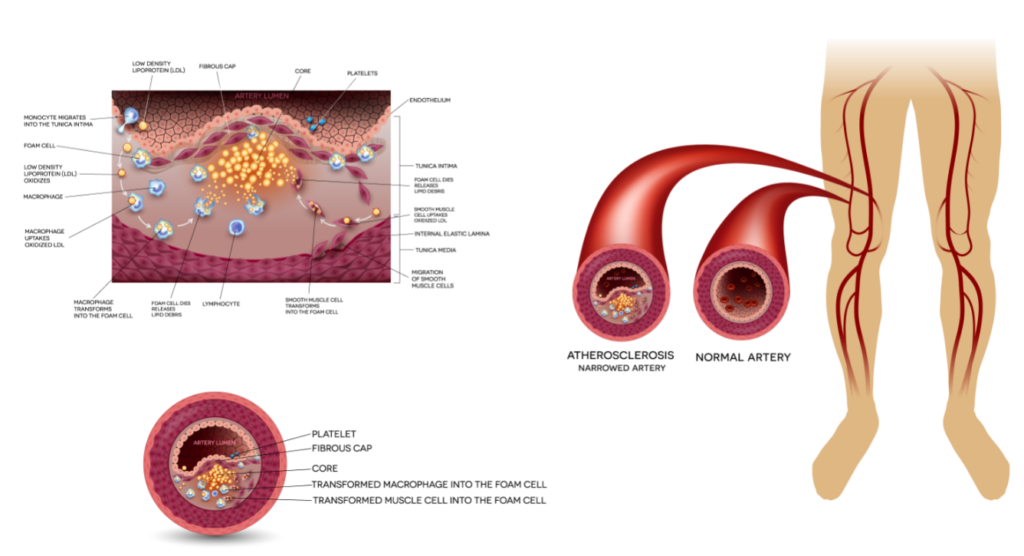Peripheral arterial disease (PAD) is a circulatory condition wherein a patient’s arteries are narrowed, thereby reducing the blood flow to their limbs. In extreme cases where the patient has not received treatment, it may eventually result in the need for amputation of the affected extremity.
While lifestyle modification may be sufficient for some patients, many diagnostic and treatment options are available to catch and stop the progress of PAD in a timely manner.

Limb Preservation
Generally speaking, all of the treatments offered by our center are designed with limb preservation in mind. In other words, our team and practice as a whole are committed to restoring and optimizing a patient’s overall blood circulation, thereby mitigating the necessity for amputation, preserving their limbs, and enhancing their quality of life.
Vascular Certified Ultrasound Testing
Vascular ultrasounds are a widely-preferred method for non-invasively measuring a patient’s blood flow. By using image-generating soundwaves, the ultrasound technology employed by physicians can effectively identify blocked or narrowed arteries.
Once the vulnerable areas have been isolated, the physician can then determine both the severity of the case and the treatments which may best suit the patient.
Diagnostic Angiography & Intervention
Angiography is accomplished by way of harmless dye injection. Once administered into the patient’s bloodstream, the physician can monitor the blood flow of the dye in real-time, thereby identifying areas of poor circulation.
Angiography imaging may be completed using…
- Magnetic resonance technology
- Computerized tomography technology
- Catheter technology
Angioplasty and Stenting
Angioplasty (or balloon angioplasty) is a treatment wherein a physician uses interventional radiology to guide a catheter up a patient’s femoral artery in the groin. Once they have effectively reached the poorly-functioning artery, they will open a small balloon inside of the artery in order to eliminate the blockage and restore the patient’s blood flow.
Stenting, which is an extension of angioplasty, may also be used. This is a minimally-invasive process that involves the insertion of a stent — which looks like a small metal cylinder — into the artery. The stent ensures the artery will stay open once unblocked once the balloon has opened it.
Atherectomy
Another minimally-invasive treatment option, atherectomy is an endovascular surgery that is designed to remove built-up plaque (or atherosclerosis) from within an artery, thereby clearing it. Generally, atherectomy is performed in conjunction with angioplasty.